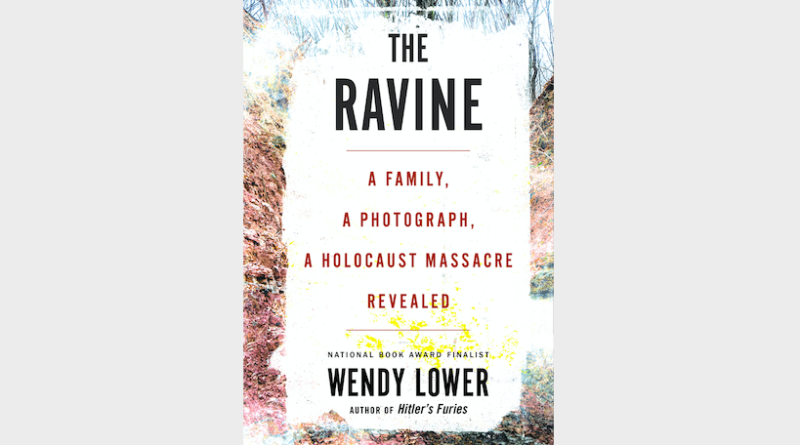REVIEW: ‘The Ravine: A Family, a Photograph, a Holocaust Massacre Revealed’ by Wendy Lower
Image courtesy of HMH / Provided by official site.
Wendy Lower’s new book, The Ravine: A Family, a Photograph, a Holocaust Massacre Revealed, tells the important and moving story of the author’s quest to find the answers and identities behind a rare picture that displays, in all of its horror and difficult reality, the final moments of a family during one of the massacres of the Holocaust. The book, running fewer than 200 pages, is a well-researched examination of the hard work it takes to connect the historical dots on this painful chapter in world history, yet, despite the challenges Lower faced, she was determined, as a historian and a human, to dig deep, to cast a wide net, to retrieve stats and stories, and to ultimately seek justice.
At the center of the narrative is a photograph that Lower views in the archives of the United States Holocaust Memorial Museum. The image, which is included in the book, depicts an act that is distressingly sad and violent, and, perhaps surprisingly, pictures like this one are largely missing from the photographic evidence of Europe in the 1940s. Lower shares that there are relatively few images of the murders at the center of the genocide because the Nazis destroyed the materials or didn’t allow photographers to document what was happening. So, this photograph, which depicts a woman and two children being shot on the precipice of a mass grave, takes on an important historical resonance and power. The figures standing by, some holding guns with the smoke of their discharge still emanating in the air, are German officials and Ukrainian collaborators.
The photograph is shocking and difficult to look at, but also necessary because of the emotional response it elicits and the documentary evidence it provides. After being presented with the picture, and having Lower’s carefully chosen words explain the different features and figures, she then begins her historical and archival investigation to find out, among other things, who this Jewish family was at the center of the image. Lower, author of Hitler’s Furies, also endeavors to find out more about the photographer, the murderers, and the general history and setting of Miropol, Ukraine, where the photograph was taken.
Along the way — and it’s a long journey; Lower spent 10 years researching for this book — the author is able to remarkably fill in many of the blanks. This is not merely a nonfiction book where the act of archival exploration is described and no answers found; Lower, to her immense credit and forensic skills, is able to glean a lot of history from her international journeys. She travels to Ukraine and heads up into the forest to find the exact location of the massacre at the Miropol ravine. She talks with locals, tracks down older residents who may have memories of what happened in 1941 and investigates what happened to the murderers. She finds perhaps the most answers when looking into the motives and motivations behind the man behind the lens and what may have driven this person to capture this act of genocide.
The Ravine always keeps the documented family at the forefront of the reader’s mind, and at the same time, Lower reminds the audience of the larger impact of the Holocaust and the many deaths that occurred in Europe, in particular Ukraine. As her chapter headings indicate — “The Missing Missing” and “Justice” — she takes on this personal and professional challenge because adding names to these pictures and providing context to these acts of violence are important. The searching for answers in the 21st century is more urgent than ever because many of the stories of eyewitnesses will no longer be accessible to historians, and thus no longer available to the relatives of victims and survivors.
Reading Lower’s book is an exercise in appreciation — for the hard work of justice and the pivotal role historians play in providing quality information to modern-day audiences. The summary of her efforts will help current and future generations understand the implications and realities of the genocide in Europe in the 20th century, and provide an educational space to learn about the story of a family during an unfathomable time period in history.
By John Soltes / Publisher / John@HollywoodSoapbox.com
The Ravine: A Family, a Photograph, a Holocaust Massacre Revealed by Wendy Lower. Houghton Mifflin Harcourt. 272 pages. Click here for more information.

